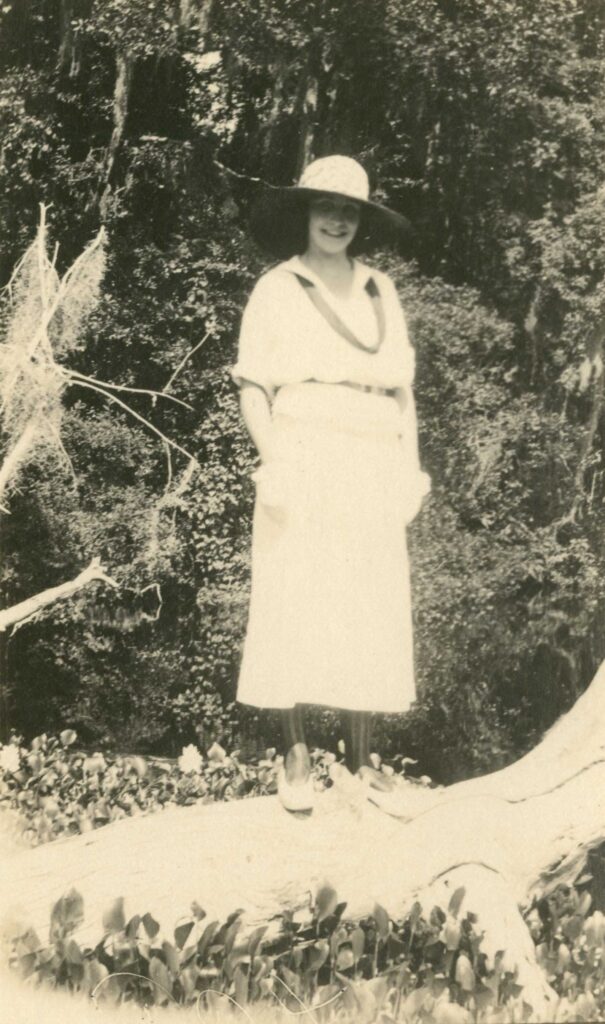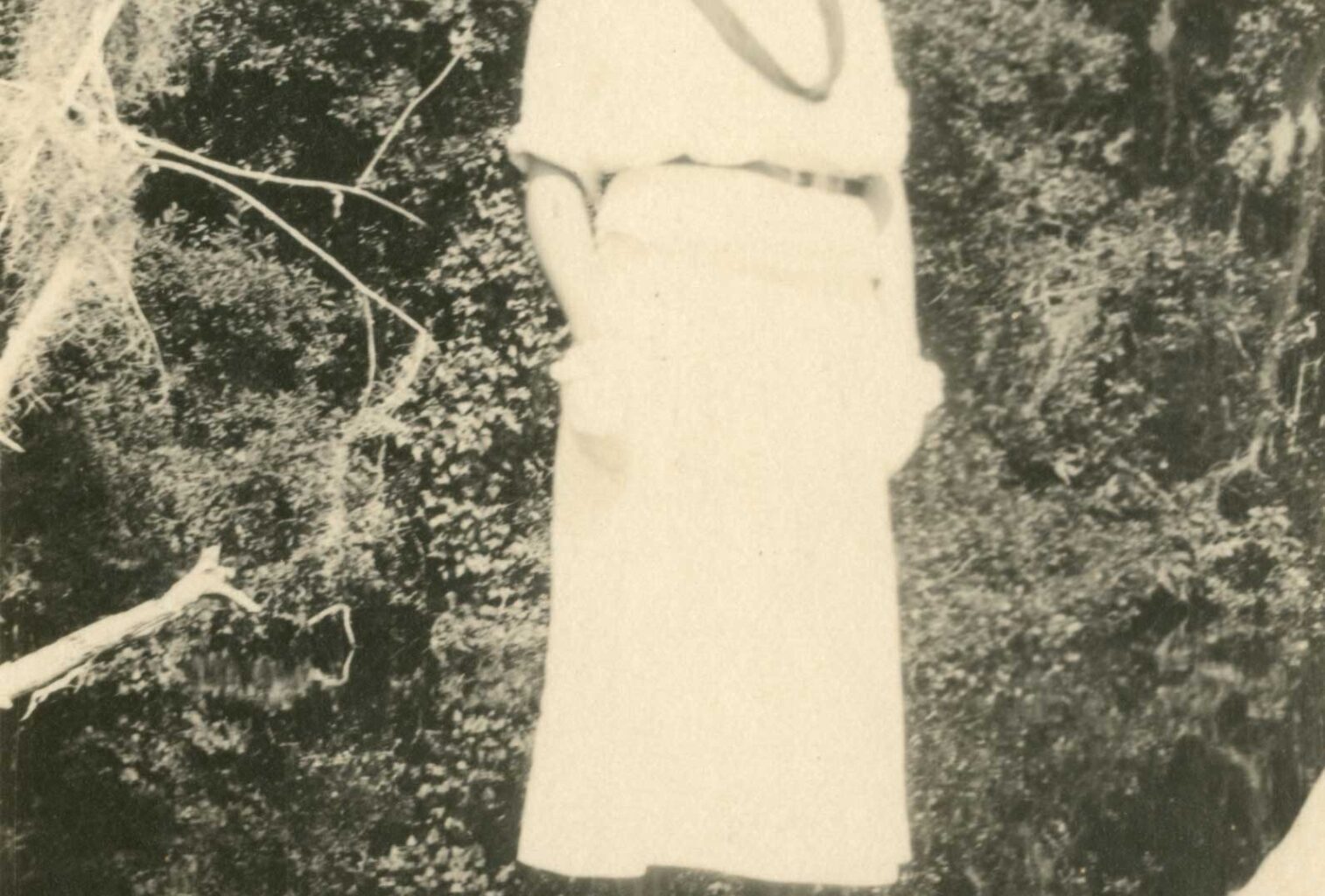At the turn of the 20th century, Mary and Thomas Pickett Robinson met and fell in love in an Orlando that was rapidly transforming from a small settlement to an enterprising city. Discovering a mutual love for photography, the couple took up shop on North Orange Avenue, going on to capture many of the most iconic images of early Orlando. Their photographs depict everything from young couples with children to the bustling downtown, from construction to natural disasters. But throughout their diverse portfolio runs one throughline — the presence of an intent, dark-haired girl, their daughter, Laura.

Laura Robinson, circa 1917, posed for one of the many photos taken during her youth. (COURTESY OF ORANGE COUNTY REGIONAL HISTORY CENTER)
Born in 1904, Laura Robinson makes her first photographic appearances very early in life, posing for portraits as an infant in her parents’ downtown studio. She would have every phase of her childhood and young adult years documented by her mother and father, whether intentionally or by accident. Her recurring presence paints an intriguing picture, on top of the already rich content of the Robinson portfolio, of the story of a girlhood in turn-of-the-century Orlando.
While it’s easy for modern eyes to perceive the lives of girls in the early 1900s as comparatively sheltered, Laura grew up in a world of endless possibility. With Mary Robinson owning 50% of the couple’s business and working in partnership with her husband to take and develop their photos, Laura had a female role model who demonstrated a particular sense of industry.
And her parents’ photos hardly paint the portrait of a docile child. Rarely since her infancy was the Robinson daughter pictured inactive. More often than not, she is captured in the background of her parents’ wilderness shots sitting on a tree trunk or along a bank. In many images, she is seen with her father and other family members while holding fishing equipment and traversing through woods.
Laura inherited her parents’ self-determination; Orlando Sentinel articles frequently depicted “Miss Robinson” traveling alone to visit friends and family in North Carolina, as well as organizing and hosting social events for peers. Some of the more whimsical images in the Robinson collection show Laura and her friends in elaborate costumes at the family property, where she hosted outdoor tea parties (and, of course, posed for photos). Laura, at a variety of ages, is shown among the family dogs, whether alongside them in her father’s prized Ford automobile or playing in the dirt.
Laura transforms throughout her parents’ photos from an astute child to an elegant young woman. Eventually, her future husband, Francis Rogers, appears beside her. Even after her marriage in 1924, she was described by the Orlando Sentinel as “Miss Laura Robinson” over her married name.
Laura’s parents captured the evolution of the younger couple’s relationship, culminating in the additional presence of Laura and Francis’ children. Her first child with Francis was given both of their family names, Cranston Robinson Rogers.
Laura’s life as documented through photos illustrates a parallel relationship with the city in which she was raised. Adventurous, creative and with a streak of innovation modeled by her parents, Laura Robinson came of age as Orlando did.
___
Grace Roberts is a museum technician at the Orange County Regional History Center.

